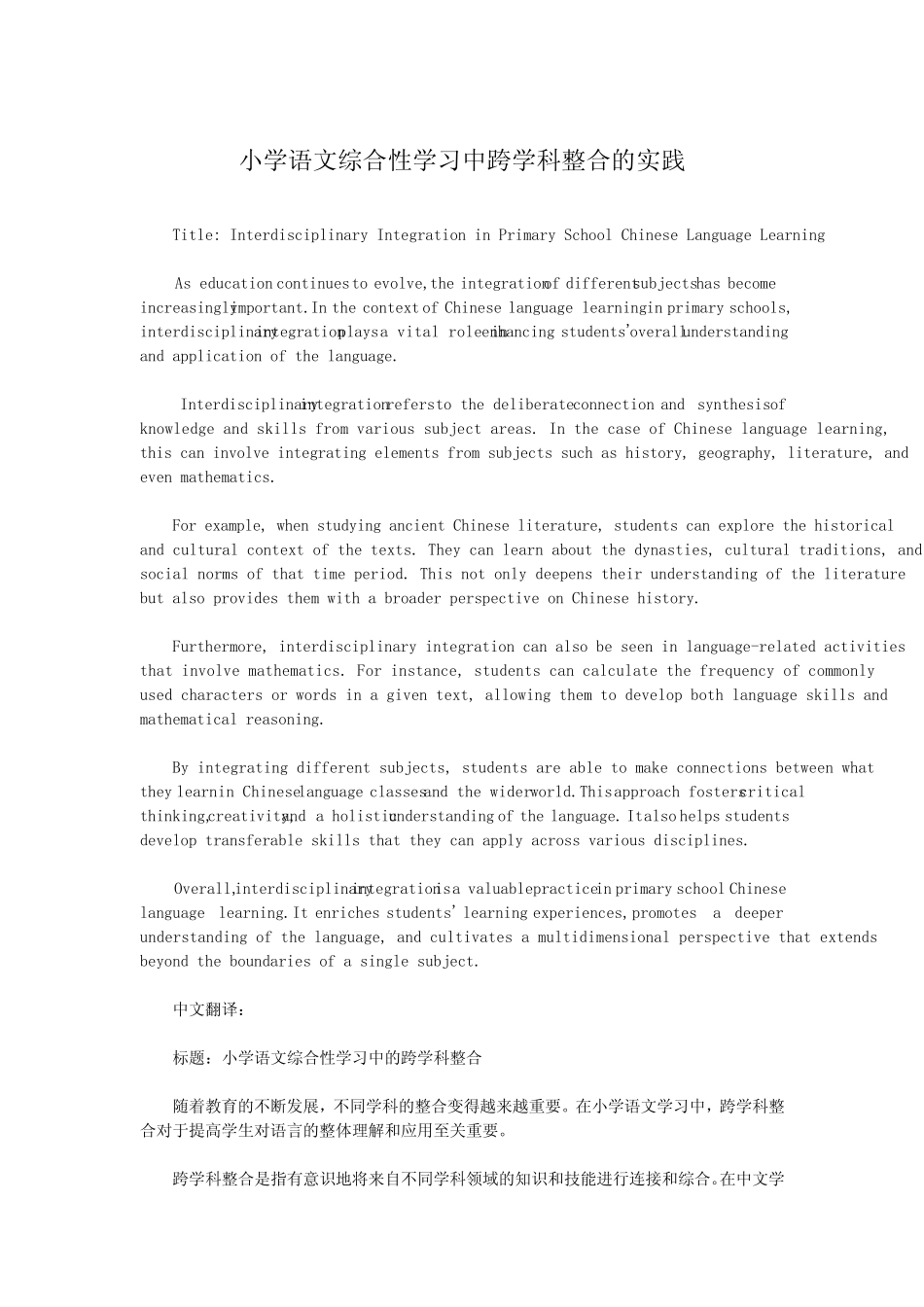小 学 语 文 综 合 性 学 习 中 跨 学 科 整 合 的 实 践 Title: Interdisciplinary Integration in Primary School Chinese Language Learning As education continues to evolve, the integration of different subjects has become increasingly important. In the context of Chinese language learning in primary schools, interdisciplinary integration plays a vital role in enhancing students' overall understanding and application of the language. Interdisciplinary integration refers to the deliberate connection and synthesis of knowledge and skills from various subject areas. In the case of Chinese language learning, this can involve integrating elements from subjects such as history, geography, literature, and even mathematics. For example, when studying ancient Chinese literature, students can explore the historical and cultural context of the texts. They can learn about the dynasties, cultural traditions, and social norms of that time period. This not only deepens their understanding of the literature but also provides them with a broader perspective on Chinese history. Furthermore, interdisciplinary integration can also be seen in language-related activities that involve mathematics. For instance, students can calculate the frequency of commonly used characters or words in a given text, allowing them to develop both language skills and mathematical reasoning. By integrating different subjects, students are able to make connections between what they learn in Chinese language classes and the wider world. This approach fosters critical thinking, creativity, and a holistic understanding of the language. It also helps students develop transferable skills that they can apply across various disciplines. Overall, interdisciplinary integrat...

